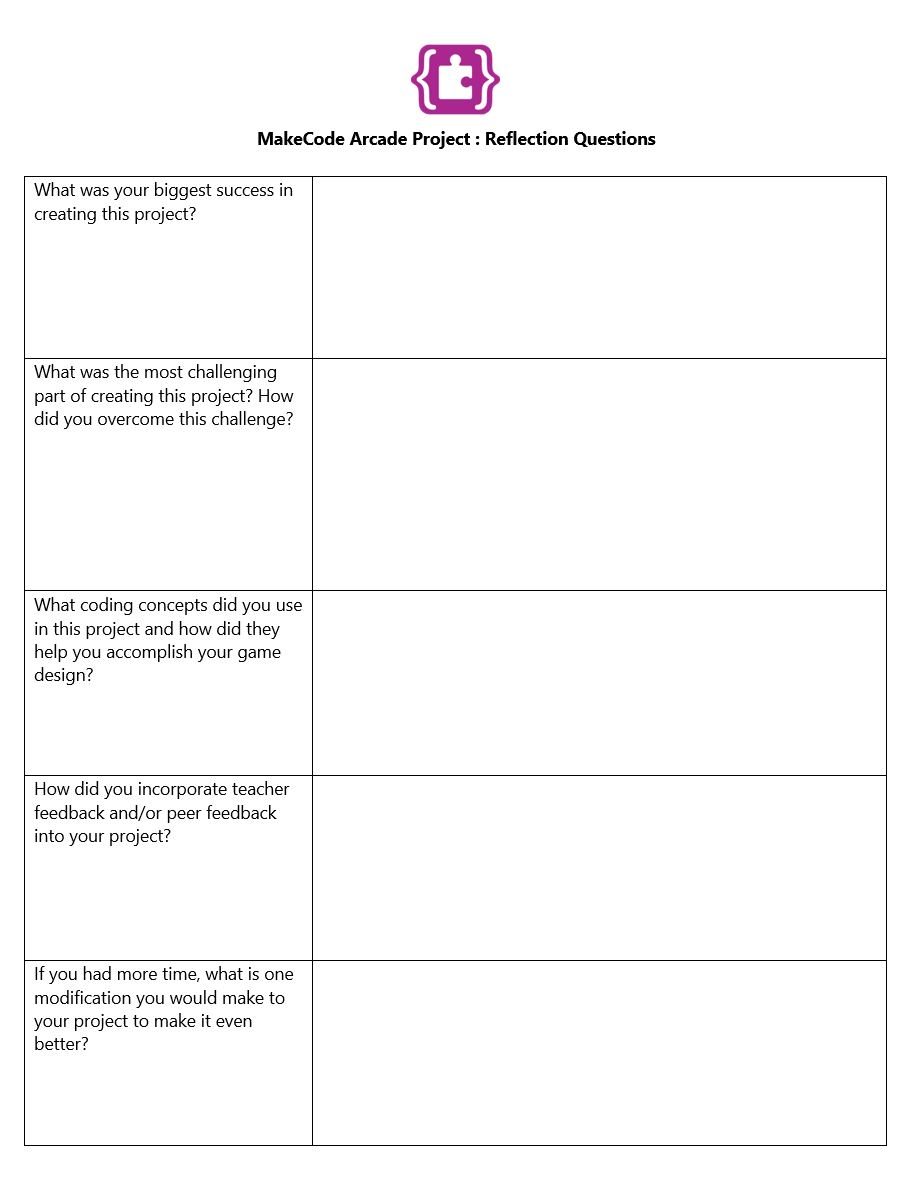Resources
What kind of open-ended opportunities do you provide for your students to authentically create games, stories, or even art?
Projects are a great way to provide students with these open-ended opportunities to engage in creativity and computational thinking! However, it's important to provide some parameters to keep students on task and have them consider both the possibilities and limitations of creating within MakeCode Arcade.
If you have a question or feedback, visit the MakeCode forum for quick answers and support from MakeCode team in addition to other MakeCode users across the globe!
The following resources help you utilize the MakeCode Arcade content. This isn't an exhaustive list or comprehensive guide. These resources should be used to inspire possibilities about what can be accomplished with MakeCode Arcade. Also keep in mind that although these resources are centered around game design, you can easily change the focus to storytelling, design thinking, mathematics, or even the arts with graphic design.
Planning sheet
Planning is a critical part of any well-executed project! This resource is intended to have students start thinking about their project and planning the details needed to complete this project. This empowers students to build out their creativity, self-efficacy, and problem-solving skill sets.
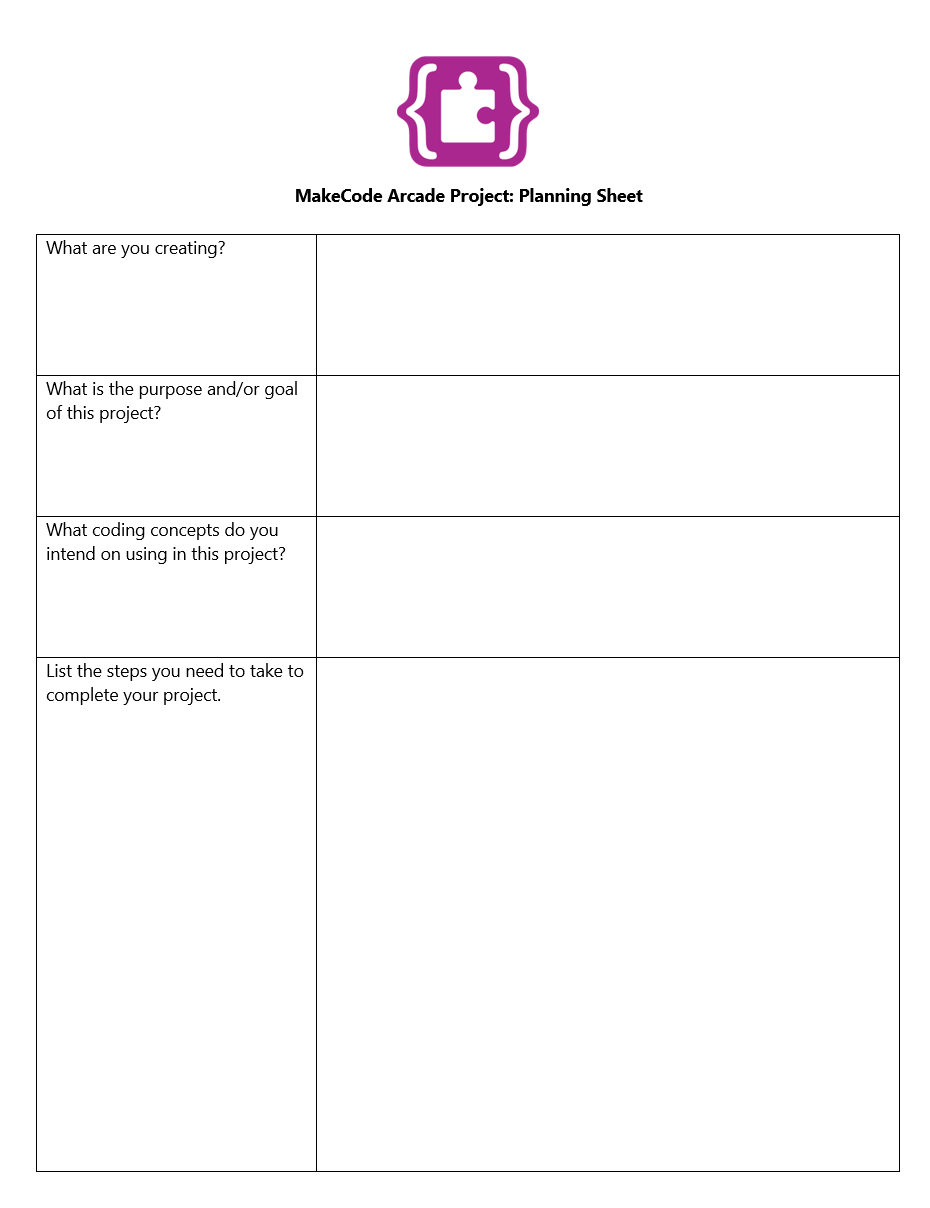
Feedback forms
Providing feedback to students is one of the most productive ways to have students engage and reflect on their learning. Feedback leads to positive learning outcomes as students are able to develop an awareness of their learning and are more easily able to recognize mistakes. Over time, feedback helps students recognize areas of improvement on their own or at least become more receptive to taking feedback as a part of continual improvement.
Feedback should be:
- Specific: Provide detailed information about what learners are doing well and what could be improved.
- Timely: Provide feedback as soon as possible; feedback is most effective when given immediately or as close to the completion of the deliverable as possible.
- Intentional: Ensure the learner knows and understands the purpose of feedback; feedback is intended to help in the learning process. Feedback isn't intended to feel intrusive, controlling, or uncomfortable.
Students should have authentic and purposeful opportunities to both give and receive feedback. For example, if we want to improve our basketball game, we need to practice and put forth the effort to improve our skills. The same idea is true with feedback. Just like any other skill, feedback must be practiced, improving over time.
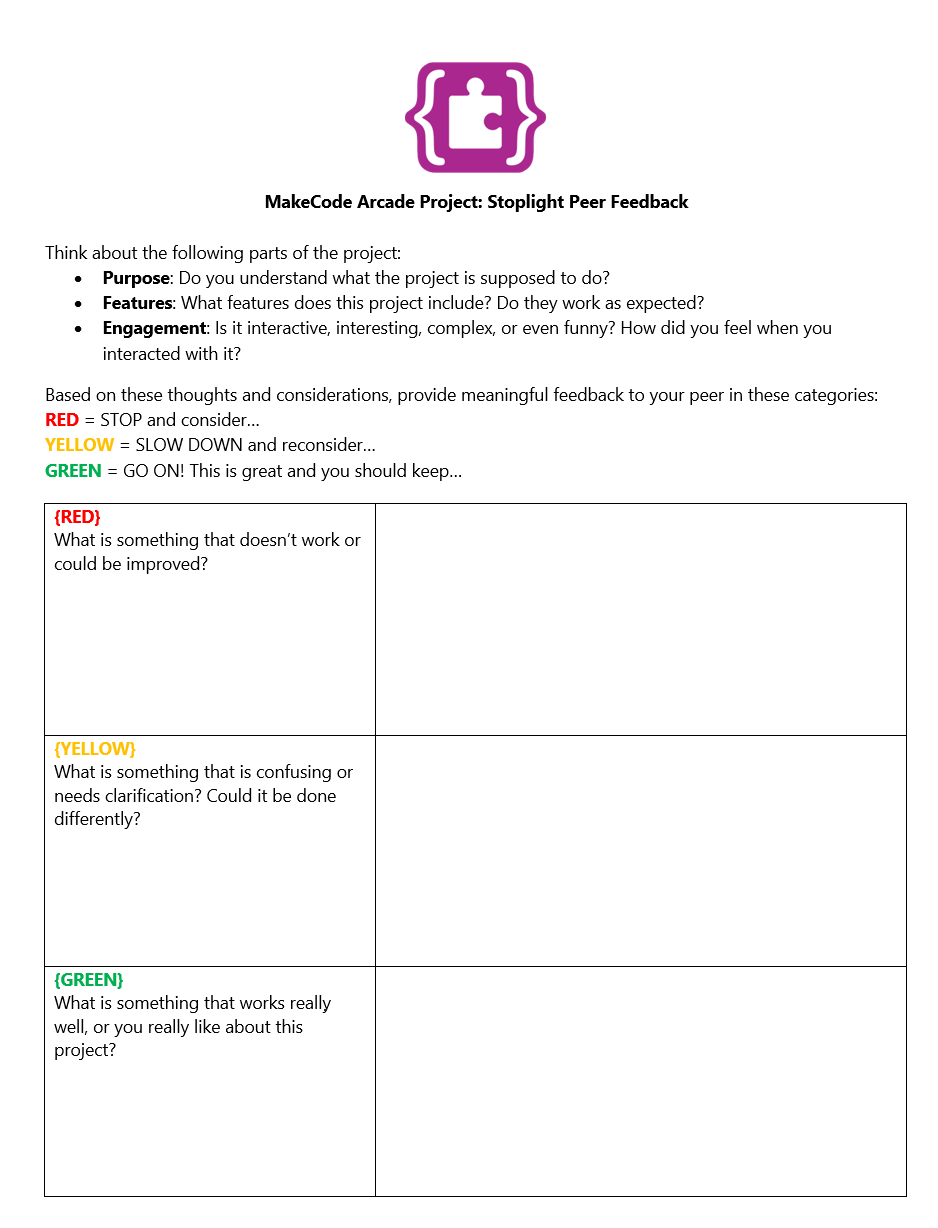
Self assessments
Self-assessments are a powerful tool to trigger deep thinking. The ability to critically think about your own work is a complex and higher-order thinking skill. Students should analyze their work to see how their work product aligns with the specified criteria in the self-assessment.
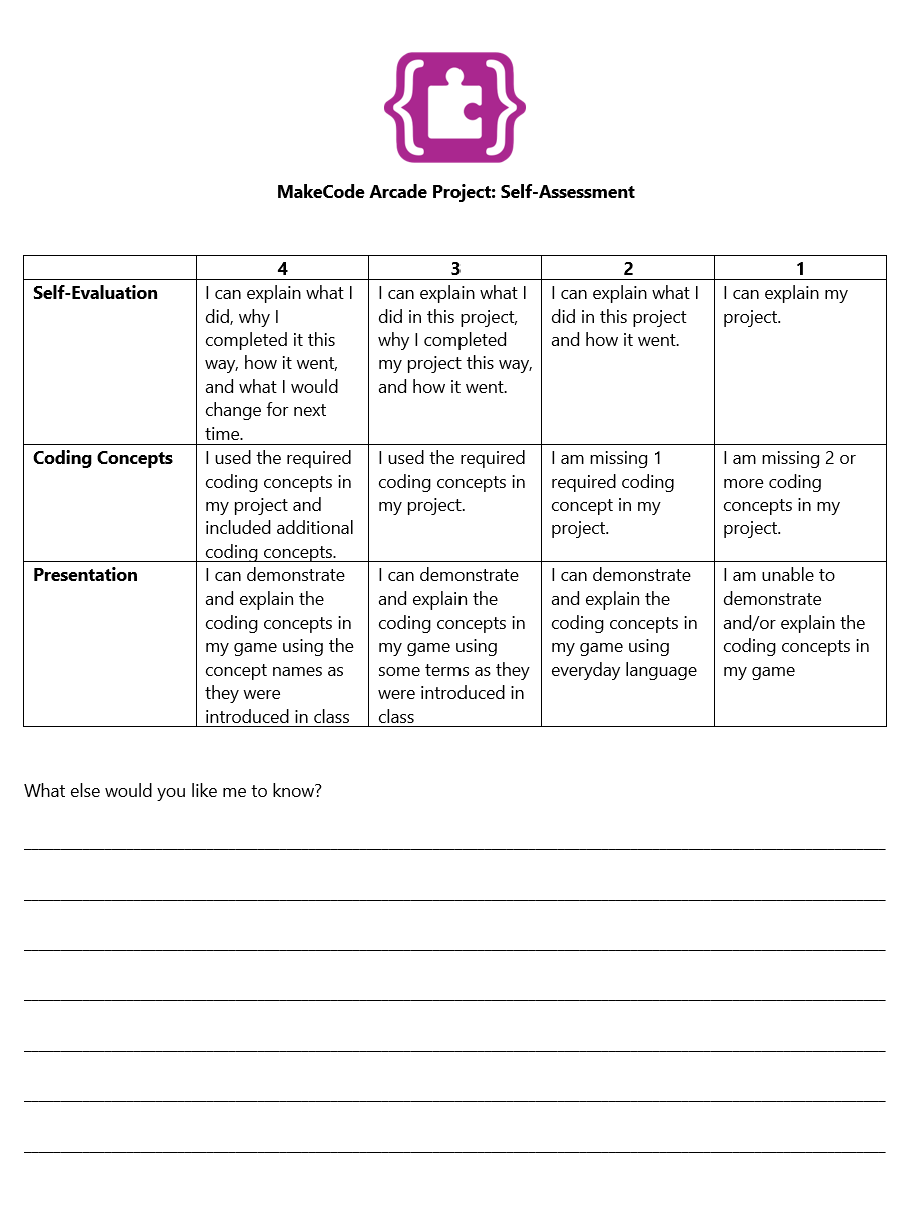
Rubrics
Rubrics provide students with a clear understanding of what is expected of them. Students will have concrete examples of what needs to be included in their project. Rubrics improve students' end products and increase students' overall learning throughout the process.

Success criteria
Success criteria directly define what success will look like in the project/assignment. When students know this, they're more likely to plan, set goals, and acquire a better understanding of how to judge their own progress. Success criteria provide students with an opportunity to assess and manage their own learning.
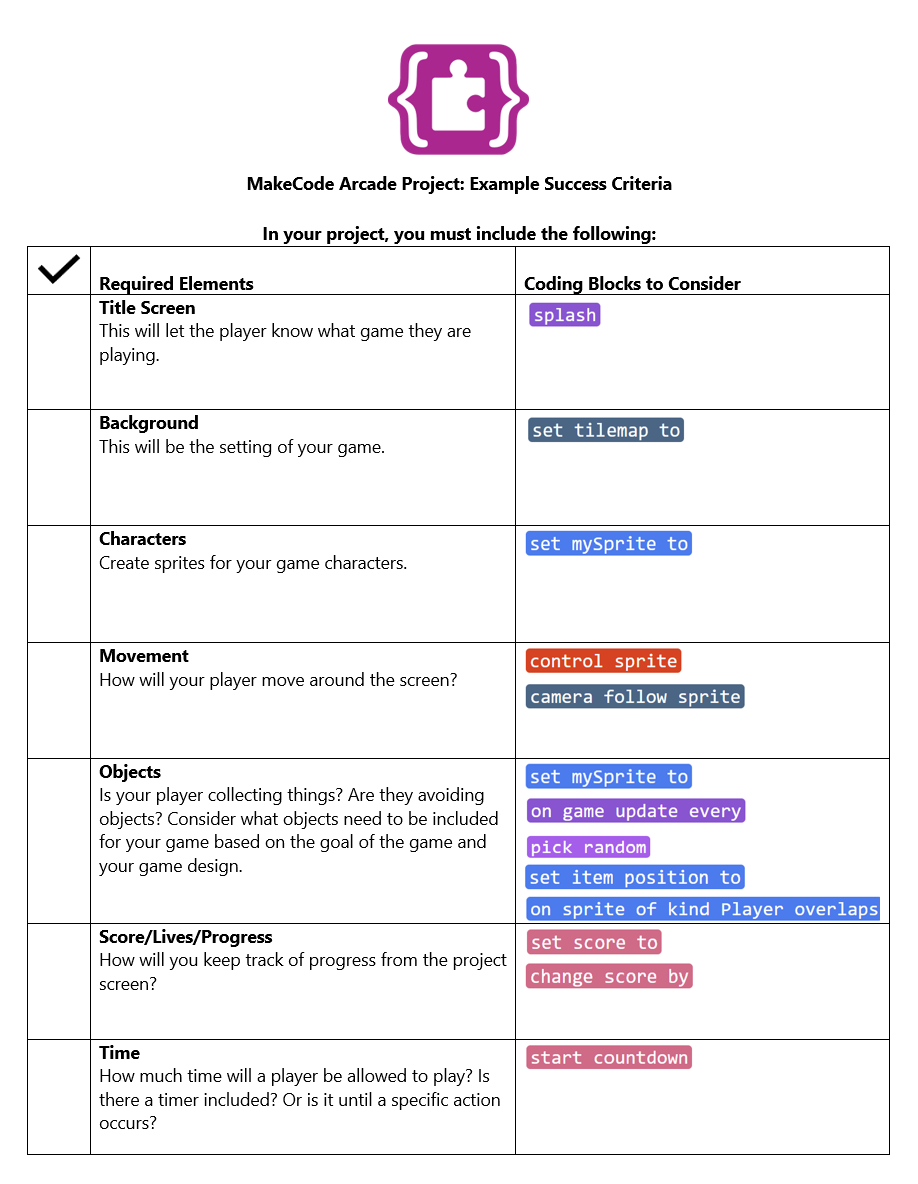
Reflection questions
Reflection is an essential component of student learning. It allows students to grow their content knowledge, metacognition, self-awareness, and character development. Reflection should be a habit, not an isolated event. Asking powerful questions helps students develop this thinking habit over time.
